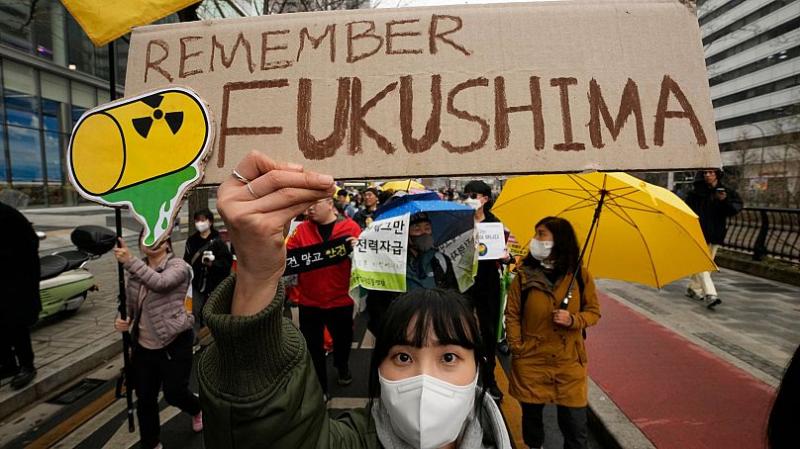Fukushima: Japan greenlights water release from nuclear plant despite criticism
Japan has authorised the release of wastewater from the tsunami-hit Fukushima Daiichi nuclear power plant.
ADVERTISEMENTMore than 1 million cubic metres of treated and diluted radioactive wastewater will end up in the Pacific Ocean, enough to fill 500 Olympic-size pools.
Why has the release of Fukishima wastewater been criticised?
This plan has drawn intense criticism from China and fear amongst the Japanese population. Most of the criticism comes from local fishing groups who fear reputational damage as they struggle to recover from the nuclear disaster.
The Japanese government, however, says that releasing the water is safe. The International Atomic Energy Agency, the UN's watchdog, has also approved the project, saying the "discharges of the treated water would have a negligible radiological impact to people and the environment."
Prime Minister Fumio Kishida said the government has done everything to ensure the plan's safety, protect the reputation of Japan's fishing industry and clearly explain the scientific basis to gain understanding in and outside the country.
- Snakes are helping scientists monitor radiation from Fukushima
- Japan green lights release of Fukushima wastewater , but will there be an environmental cost?
Impact on people and environment is 'negligible'
Groups in South Korea and China have also raised concerns, turning it into a political and diplomatic issue.
China has banned seafood imports from 10 prefectures in Japan, including Fukushima and the capital, Tokyo.
Environmental activists march during a rally in Seoul, South Korea, Thursday, March 9, 2023. denouncing Japan's planned release of treated radioactive wastewater into the sea.Ahn Young-joon / AP"There is an understandable perception that all radioactive materials are always and everywhere dangerous... but not all radioactive materials are dangerous," says Tony Irwin, an honorary associate professor at the Australian National University.
"Nuclear power plants worldwide have routinely discharged water containing tritium for over 60 years without harm to people or the environment, most at higher levels than the 22 TBq per year planned for Fukushima," he added.
Scientists generally support the IAEA view, but some say long-term impact of the low-dose radioactivity that remains in the water needs attention.
- Dogs in Chernobyl could teach scientists how humans can live under ‘environmental assault’
- Chernobyl: Why did the nuclear zone's red forest defeat these Russian troops?
Decades of work to shut down the plant
That water will contain about 190 becquerels of tritium per litre, below the World Health Organisation drinking limit of 10,000 becquerels per litre, according to Tepco. A becquerel is a unit of radioactivity.
An exhaust stack of Fukushima nuclear plant is seen from a fishing port in Namie, Japan Tuesday, Aug. 22, 2023. Local fishing groups fear reputational damage.Kyodo News / APBefore being discharged, the water will be filtered and diluted to be released over 30 years in small quantities. The first batch of 7,800 cubic metres will be poured into the ocean starting Thursday and over about 17 days, the Tokyo Electric Power Company (Tepco) said.
ADVERTISEMENTThe government has said that releasing the water was a necessary step, among many others, to decommission the plant, a project that could take decades.
What happened at Fukushima?
A massive earthquake and tsunami destroyed the Fukushima Daiichi plant’s cooling systems, causing three of its reactors to melt and contaminating their cooling water.
The water, now amounting to 1.34 million tons, is collected, filtered and stored in about 1,000 tanks, which fill much of the plant's grounds and will reach their capacity in early 2024.
منبع خبر: یورو نیوز ![]()
اخبار مرتبط: Fukushima: Japan greenlights water release from nuclear plant despite criticism
حق کپی © ۲۰۰۱-۲۰۲۵ - Sarkhat.com - درباره سرخط - آرشیو اخبار - جدول لیگ برتر ایران

